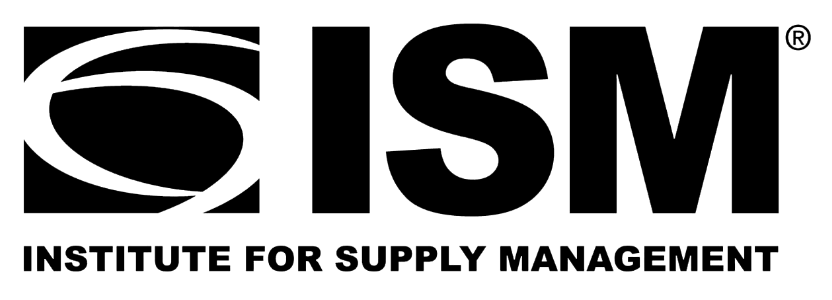Economy

Smooth Transition at Buying Alliance
Written by Tim Triplett
August 25, 2017
Michael Wagner, who took over as president of the North American Steel Alliance on May 1, hopes to build on the buying group’s 20 years of success. “It’s not broken; it doesn’t need to be fixed. I look at the next 20 years and how we can make it even more successful,” he said.
Wagner replaced long-time NASA President Lonnie Terry upon his retirement. Retiring at the same time was NASA Vice President Miles Donovan. Terry and Donovan led NASA almost from its beginning in 1996. The organization was careful their dual departure did not leave a leadership vacuum. Wagner spent seven months working alongside the pair during a carefully planned transition period. “We have not missed a beat,” he said.
![]() NASA is a member-owned buying cooperative serving the metals distribution industry. It was formed in the mid ’90s, as the industry began to consolidate, to give small and mid-sized service centers the leverage they needed to compete against larger rivals. Today, NASA represents 121 independently owned member companies that operate more than 430 distribution and processing facilities in the U.S., Canada and Mexico. As a group, NASA members claim annual revenues exceeding $9 billion, making them collectively among the largest steel buyers in North America. NASA members receive cost savings and rebates based on the volume of business they do with preferred suppliers.
NASA is a member-owned buying cooperative serving the metals distribution industry. It was formed in the mid ’90s, as the industry began to consolidate, to give small and mid-sized service centers the leverage they needed to compete against larger rivals. Today, NASA represents 121 independently owned member companies that operate more than 430 distribution and processing facilities in the U.S., Canada and Mexico. As a group, NASA members claim annual revenues exceeding $9 billion, making them collectively among the largest steel buyers in North America. NASA members receive cost savings and rebates based on the volume of business they do with preferred suppliers.
Wagner, and NASA’s seven other employees, are charged with negotiating and administering programs with 40-50 preferred suppliers. Metal suppliers include steel producers, tube mills, cold finishers and makers of bar, gratings, expanded metals and specialty tubing. Operational suppliers provide products ranging from processing equipment to consumable goods to services such as banking and logistics.
NASA is always looking for new members, but is careful about who it welcomes. Its membership committee carefully reviews each applicant to determine if they are a good fit for the NASA community. Members can be large or small, but must be independently owned and financially sound and commit to supporting NASA suppliers. “It’s not an exclusive club, but there is a process,” Wagner said. He estimates NASA adds three to five new members each year. With each addition, the buying group becomes bigger and more attractive to suppliers.
Members are not required to purchase a certain amount to support the co-op, but they are incentivized to buy through the NASA programs. “We look at them as 121 separate divisions. We don’t get between them and the mills. They still have that one-on-one buy-sell relationship. The NASA staff serves as an extension of the members and suppliers to help knock down any barriers to doing business,” Wagner said.
He brings a deep mill background to his new position as NASA president, so he understands the supplier perspective. His long career in sales and marketing has included executive positions with Bethlehem Steel, Nucor-Yamato, Nucor Crawfordsville, Birmingham Steel and Severcorr.
Wagner outlined his three-pronged mission as the new head of the organization: more outward communication, more data analytics and more support for suppliers. “We will never lose our laser focus on rebates and dividends for the members—that is the basis of the co-op. But the organization has matured to the point where members are asking, ‘What else is there?’”
On the communications front, NASA has improved its website and started an e-newsletter for members. It hosts online forums so members can compare notes on such issues as safety, best practices, family succession or new equipment. It sends out more press releases. “You will see the communications side come alive a bit more,” Wagner said.
NASA has just concluded a pilot program on benchmarking. It has contracted with an outside consulting firm to analyze and report member data on sales, inventories and other financial metrics so members can compare their own performance to that of their peers.
The third objective is to build even stronger relationships with suppliers and continue to eliminate any obstructions that can get in the way of commerce.
“The next step for the co-op is about giving members and suppliers the tools they need to be more successful, to help them make more informed decisions,” he said. “We plan to open up more dialog with the members, which is healthy and will strengthen everything for everybody.”
Written by Tim Triplett Tim@SteelMarketUpdate.com

Tim Triplett
Read more from Tim TriplettLatest in Economy

ISM: Manufacturing expansion loses steam after two months of growth
US manufacturing activity slowed in March after two straight months of expansion, according to supply executives contributing to the Institute for Supply Management (ISM)’s latest report.

Chicago Business Barometer rose to 16-month high in March
The Chicago Business Barometer increased for the third-consecutive month in March. Despite this, it still reflects contracting business conditions, as it has since December 2023.

Durable goods orders rise again in February
Transportation equipment led the increase, rising 1.5% to $98.3 billion.

Consumer confidence falls for fourth consecutive month
People remain concerned about inflation, trade policies, and tariffs.

Housing starts ticked up in February
Single-family starts last month hit a rate of 1.10 million, a month-over-month increase of 11.4%, census data shows.
